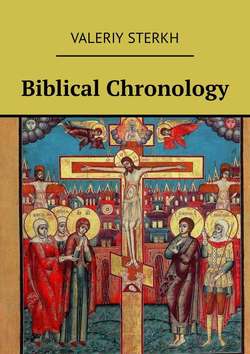Читать книгу Biblical Chronology - Valeriy Sterkh - Страница 12
Section 1. The basics of chronology
The Jewish calendar
ОглавлениеWe know very little about the original Jewish calendar. Four months of the ancient calendar are mentioned in the Old Testament: Aviv [Abib] (the first month, the month of ears of corn) [Ex 13:4], Zif (the second month, month of blossoms) [1 Kings 6:1], Ethanim (the seventh month, the month of strong winds) [1 Kings 8:2], Bul (the eighth month, the month of the harvest) [1 Kings 6:38].
While in Babylonean captivity, the Jews adopted the lunisolar calendar of their captors. It is easy to verify by comparing the names of the ancient Babylon months with the contemporary Jewish calendar.
The names of the ancient Babylon months: 1. Nisannu, 2. Ayyaru, 3. Simanu, 4. Duuzu, 5. Abu, 6. Ululu, 7. Tasritu, 8. Arahsamna, 9. Kislimu, 10. Tebetu, 11. Sabatu, 12. Addaru.
The names of months in the late Jewish calendar: 1. Nisan (former Aviv), 2. Iyyar (former Zif), 3. Siwan, 4. Tammuz, 5. Ab, 6. Elul, 7. Tisri (former Ethanim), 8. Marheswan (former Bul), 9. Kislew, 10. Tebet, 11. Sebat, 12. Adar.
In the ancient Jewish world, the appearance of the first crescent in the evening sky, which was called “neomenia”, marked the beginning of the month. The moment of neomenia was simply observed, and then the beginning of the new month was announced. So, there were 29 or 30 days in a month. The standard year had 12 months. But since the tropical (solar) year consists of 12.36826 synodic (lunar) months, the inaccuracy added up over time and had to be eliminated by adding an extra month. Whether there was a need for the extra month was determined based on the conditions of the grain crops and the age of the sacrificial animals – after all, the Passover law had to be observed: “In the fourteenth day of the first month [Nisan (Aviv)] at even is the LORD’S passover… Ye shall bring a sheaf of the firstfruits of your harvest unto the priest: And he shall wave the sheaf before the LORD, to be accepted for you: on the morrow after the sabbath the priest shall wave it. And ye shall offer that day when ye wave the sheaf an he lamb without blemish of the first year for a burnt offering unto the LORD” (Lev 23:5, 10—12). That is why the year had to be extended by one month if the grains were not ripe, and the lambs too young. The extended 13-month year was usually called embolismic.
Around 500 NE, the Jewish calendar was reformed. The beginning of the year was moved to the month of Tisri, and Molad became the starting point for counting months (the astronomic new moon). Also, specific rules were introduced for alternating the number of days in a month and adding an extra month, which facilitated the process for calculating dates.
The reference point of the Jewish calendar was moved to the foundation of the world, Tisri 1 (“the new moon of creation”), which corresponded to October 6/7, 3761 BNE in the Julian calendar.
